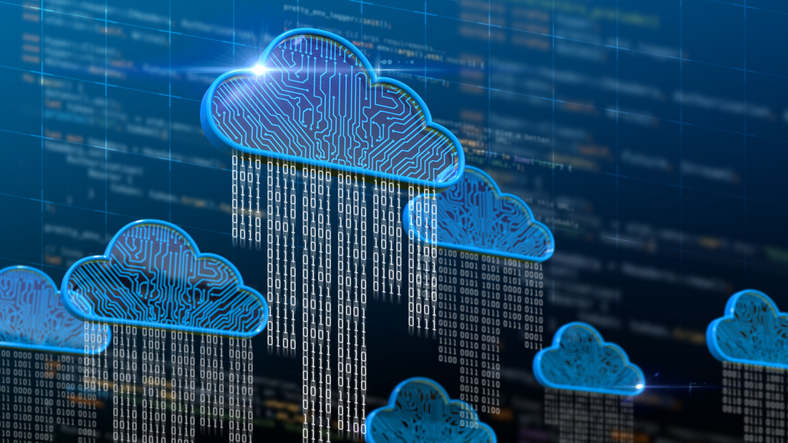Cloud monitoring has become a crucial tool for managing and optimizing cloud-based resources. As organizations increasingly adopt cloud computing, the need for effective monitoring solutions has grown. Cloud monitoring provides a comprehensive view of the performance, security, and health of cloud-hosted applications and infrastructure. In this article, you will find answers to questions like what is network monitoring, how it works, the benefits it offers, and the tools involved.

Network monitoring is a fundamental practice in IT management that involves the continuous observation and analysis of a network’s performance, health, and security. It is designed to ensure that all network components, such as servers, routers, switches, firewalls, and connected devices, are operating efficiently and securely. By tracking key metrics like bandwidth usage, latency, uptime, and error rates, network monitoring enables IT teams to detect and resolve issues before they escalate into serious problems that could disrupt business operations.
With specialized software tools, network monitoring provides real-time insights into the network’s status, allowing administrators to identify anomalies, monitor traffic patterns, and receive alerts about potential threats or performance bottlenecks.
Cloud monitoring operates by continuously tracking the performance and usage of resources across various environments, including cloud, on-premises, and hybrid setups. This real-time monitoring capability is essential for ensuring that applications, storage, and networks function optimally, regardless of their location. By providing instant insights into the status of these resources, cloud monitoring helps IT teams quickly detect and address issues before they impact users or services.
For instance, cloud monitoring can track the response times of applications hosted in different cloud environments, ensuring that performance remains consistent even as workloads shift between cloud providers or data centers. This visibility is crucial for maintaining the reliability and efficiency of IT services in a distributed environment.
A primary function of cloud monitoring tools is to observe the usage and traffic patterns of cloud resources. This includes tracking how much storage, processing power, and bandwidth are being consumed by different applications and services. By analyzing this data, IT teams can optimize resource allocation, ensuring that no single resource is overburdened while others remain underutilized.
For example, monitoring tools can alert administrators when a virtual machine approaches its CPU limit, allowing them to take corrective action before performance degrades. This proactive management helps maintain smooth operations across the cloud infrastructure.
Another critical aspect of cloud monitoring is measuring and visualizing performance across the application and network layers. The process includes gathering data on KPIs like throughput, latency, and error rates and presenting it in a user-friendly format. Visualization tools help IT teams quickly identify trends, spot potential bottlenecks, and understand the overall health of the cloud environment.
In a cloud environment, data is often spread across multiple services, regions, and platforms. Effective cloud monitoring tools aggregate this data, providing a unified view of the entire infrastructure. This aggregated data is crucial for understanding the broader context of performance issues and making informed resource management and optimization decisions.
By combining data from cloud databases, storage solutions, and networking components, IT teams can gain a holistic view of how different parts of the infrastructure are interacting and where potential improvements can be made.
Cloud monitoring tools are equipped with advanced algorithms that analyze data for unusual patterns that might indicate a problem, such as a sudden spike in network traffic or an unexpected drop in application performance. These tools can automatically flag these anomalies, allowing IT teams to investigate and resolve issues before they lead to outages or other serious consequences.
If a cloud monitoring system detects a sudden increase in failed login attempts on a critical server, it can trigger an alert, enabling the security team to respond promptly and prevent a potential security breach.

Cloud monitoring offers a comprehensive approach that goes beyond merely checking the health of the infrastructure. It provides deep insights into application performance, including detailed metrics down to the level of individual transactions and code execution. This level of monitoring helps businesses ensure that their applications are running efficiently and that users are experiencing optimal performance.
For example, cloud monitoring can reveal how a specific piece of code impacts an application’s overall response time, allowing developers to optimize performance at a granular level.
One of the significant advantages of cloud monitoring is its scalability. As organizations grow, so do their monitoring needs. Cloud monitoring tools can easily scale alongside the infrastructure, providing the ability to monitor additional servers, applications, and services as they are added. This scalability is often achieved through on-demand provisioning, allowing businesses to expand their monitoring capabilities without significant upfront investments.
Cloud monitoring is typically a subscription service, allowing businesses to pay only for the resources they monitor. This cost-efficient model eliminates the need for significant upfront investments in monitoring hardware and software. Additionally, cloud monitoring solutions are often quick to deploy, requiring no major changes to existing infrastructure.
A small business can start with a basic monitoring package and gradually upgrade as its needs grow, ensuring monitoring costs align with its operational budget.
Traditional monitoring methods often rely on manual checks and reactive responses to problems. In contrast, cloud monitoring uses automation to detect and address issues before they escalate. By continuously analyzing performance data and identifying potential vulnerabilities, cloud monitoring tools enable IT teams to take preventive action, reducing downtime and improving system reliability.
Cloud monitoring provides IT teams with remote access to monitoring dashboards, allowing them to oversee the cloud infrastructure from anywhere at any time. This flexibility is especially valuable for organizations with distributed teams or remote work policies. Web-based dashboards enable IT administrators to monitor the environment using any device with internet access, ensuring that they can respond to issues quickly, regardless of their location.
Cloud environments are dynamic, with workloads frequently shifting between servers, regions, or cloud providers. Cloud monitoring tools are designed to adapt to these changes, tracking performance continuously, even as resources move. This adaptive monitoring ensures that performance issues are detected and addressed in real time, maintaining the stability and reliability of applications.
For example, if a workload is moved from one data center to another due to maintenance, the cloud monitoring system will continue to track its performance, ensuring that the move does not negatively impact the service.
Security and compliance are critical considerations in any cloud environment. Cloud monitoring tools help businesses maintain high-security standards by continuously monitoring for potential threats and ensuring that all operations comply with industry regulations. These tools often include features like automated security checks, real-time alerts, and detailed audit logs.
Cloud monitoring can automatically enforce security policies, monitor for suspicious activity, and generate reports to demonstrate compliance with regulations such as GDPR or HIPAA.
As businesses adopt more complex IT architectures, including microservices, containerization, and multi-cloud strategies, the need for comprehensive monitoring becomes increasingly important. Cloud monitoring provides the visibility needed to manage these complex environments, ensuring all components work together seamlessly and efficiently.
In a microservices architecture, cloud monitoring can track the performance of each service independently while also providing insights into how services interact with one another, helping to identify and resolve performance bottlenecks.
Reliable connectivity is essential for maintaining the performance and availability of cloud-based applications and services. Cloud monitoring is critical in ensuring that all IT infrastructure components remain connected and functioning as expected. By continuously monitoring network performance, cloud monitoring helps businesses avoid disruptions that could negatively impact users.
Cloud monitoring can detect and address issues like network congestion or routing errors, ensuring that users can access applications without delays or interruptions.
Poor visibility into cloud environments can lead to significant business risks, including revenue loss, brand reputation damage, and reduced employee productivity. Cloud monitoring helps safeguard business operations by providing the insights needed to maintain high performance, security, and reliability across all cloud-hosted resources.
By identifying and resolving performance issues before they affect users, cloud monitoring helps businesses avoid the costs associated with downtime and service disruptions.

There is a wide range of tools available for cloud monitoring, each designed to track specific aspects of cloud performance. Some tools are integrated directly into cloud services, offering seamless monitoring of specific cloud environments, while others are third-party solutions that provide more customizable and comprehensive monitoring capabilities across multiple cloud platforms.
Built-in cloud monitoring tools offer the advantage of seamless integration with specific cloud services, providing a user-friendly experience and direct access to relevant metrics. However, third-party tools often offer more extensive features, such as custom metrics, cross-platform compatibility, and advanced analytics, making them a good choice for organizations with complex or multi-cloud environments.
Custom metrics allow businesses to tailor their cloud monitoring efforts to their specific needs, focusing on the KPIs that matter most to their operations. Full-stack visibility ensures that all layers of the cloud environment, from infrastructure to applications, are monitored effectively. This comprehensive approach is critical for identifying issues early and maintaining optimal performance across the board.
Cloud monitoring is an indispensable tool for modern businesses that provides the visibility and control needed to manage complex cloud environments effectively. With the right monitoring tools, businesses can optimize performance, enhance security, and avoid potential issues.
If you need expert advice or assistance with cloud monitoring, Stratus Informational Systems is here to help. Whether you want to enhance visibility across your cloud environment, ensure real-time performance tracking, or secure your data, we offer tailored support to meet your unique needs. Don’t hesitate to contact us for personalized guidance and solutions that will keep your cloud infrastructure running smoothly.